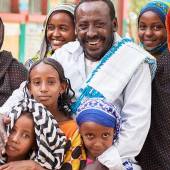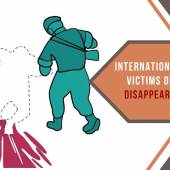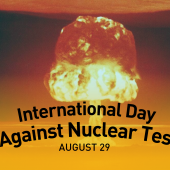International Day of Women and Girls in Science

Since 2015, the International Day of Women and Girls in Science celebrated on February 11 has created greater awareness that women and girls may have full and equal access and participation in science.
Why is this so? The United Nations Sustainable Development Goals (SDGs) 2030 reiterate that science and gender equality are essential drivers of human development.
Moreover, “Leave no one behind” is a key and transformative tenet of SDGs. Achieving SDGs can be feasible provided women and girls are on board in every aspect of societal progress and welfare.
For decades, efforts have been made worldwide to encourage, inspire and engage women and girls in science. Though significant progress has been made in this regard in some parts of the world, more efforts are needed to promote gender equality and empowerment of women and girls so that they will have better representations in science and technology and contribute to the good of society.
The promotion of education, gender equality, and the empowerment of women and girls are needed to achieve full and equal access to and participation in science. In this connection, it is good to remember—“The world needs science, and science needs women and girls,” as reported by the United Nations (Women) in a recent article.
The need and importance of women and girls in science can be further seen with the work and contribution of two German scientists—Dr. Ugur Sahin and Dr. Özlem Türeci, the couple who founded BioNTech company. The duo—a husband-and-wife—was able to develop the leading vaccine to solve Covid-19. BioNTech, established by both scientists, teamed up with Pfizer on a more than 90 percent effective vaccine. This was the groundbreaking contribution to face the pandemic.
Moreover, this is how men and women complement the work of science and other branches of knowledge. It suffices to say that two German scientists' contribution serves as an exemplar for all as the world marks the International Day of Women and Girls in Science.
However, women and girls worldwide face many hurdles in pursuing their careers in science, mathematics, and technology. One of the hurdles is the pervasive, persistent, and prevalent gender gap in science and technology. Lack of proper gender balance in representation in Science holds women back. This needs to change.
The UNESCO’s forthcoming Science Report says, “Only 33 percent of researchers are women, although they represent 45 and 55 percent of students at the Bachelor’s and Master’s levels of study respectively, and 44 percent of those enrolled in Ph.D. programs. While 70 percent of health and social care workers are women, they are paid 11 percent less than their male counterparts.” In other words, women and girls are continually underrepresented in science, education, and technology.
The other obstacle women and girls face is increasing societal stereotypes against women and girls, often based on gender prejudice. The existing gender disparities affect women scientists to progress with the Science, Technology, Engineering, and Mathematics (STEM) strand.
In terms of the global scenario, women and girls living and working in developed countries may have better access to opportunities in STEM than their counterparts living in third world countries, such as in Africa, Asia, Latin America, or other low-income countries. Most countries lack behind to provide complete and equal access for women and girls to pursue careers in STEM.
It is recommended that families, societies, communities, and countries worldwide make proactive and decisive efforts and allocate needed resources to address the existing gender disparities and discrimination women and girls face on many fronts. Such deliberate efforts will pave the way for women and girls worldwide to pursue careers in science, provided they get the opportunity to be the pipelines in STEM. This is the purpose of marking the International Day of Women and Girls in Science.
Besides, with higher education and empowerment, women and girls will have the freedom to assert their agency and contribute to economic development. Their human capital will enable them to dream high and become agents of change in any discipline, especially science. This will also allow them to chart their narratives as women scientists for the common good.
Finally, society begins to appreciate, acknowledge and accord women’s contribution to science and other allied subjects. One way to start is to end stereotypes, gender disparity, and discrimination against women and girls in science. When this happens, women remain as beneficiaries and begin to be catalysts of change.
Radio Veritas Asia (RVA), a media platform of the Catholic Church, aims to share Christ. RVA started in 1969 as a continental Catholic radio station to serve Asian countries in their respective local language, thus earning the tag “the Voice of Asian Christianity.” Responding to the emerging context, RVA embraced media platforms to connect with the global Asian audience via its 21 language websites and various social media platforms.














